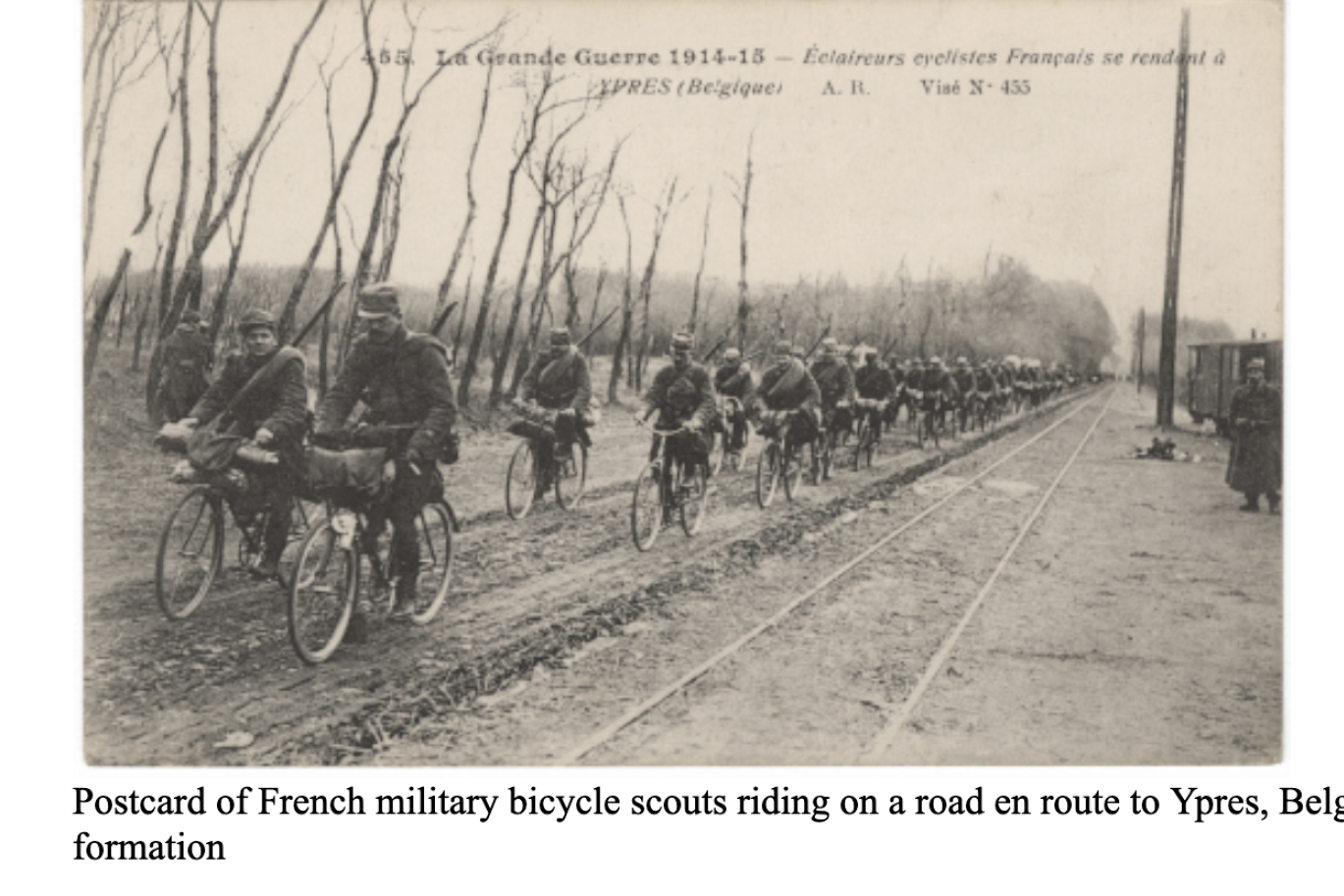General News
21 September, 2024
Veterans' Voices: Roydon Ivory Fowler
Royden Ivory Fowler was born at Noradjuha.

His mother was Mary Fowler of Launceston, Tasmania.
He was single on enlistment and 22 years of age.
Royston had previously served in 29th Australian Light Horse for three years at Caufield Senior Cadets.
He enlisted on November 4 or 11 1916, joining the 2nd Anzac Cyclist Battalion, Reinforcements 8, as a private.
His service number was 793.
Roydon served at Fraser Hill Camp in Brisbane in Training Coy with the 11 Depot Battalion from November 11 until December 5 1916.
He served at Royal Park Camp, Melbourne, in F Company from December 6 until December 19 1916.
Roydon sailed from Melbourne on board RMS Orontes on December 23 and disembarked at Plymouth, England, on February 18 1917 with 8/2 Cyclist Reinforcement, a regiment of 6th Infantry Battalion AIF marched into Australian Detle Camp, Perham Downs.
He was transferred to 6 Battalion on March 7 and to 2nd Training Battalion (2nd Cyclist Battalion) from March 9.
On May 13 Roydon went to hospital sick and was admitted to 1st Australian Depot Hospital Bulford with venereal disease (V.D) at Bulford, UK.
Roydon was one of more than 8 per cent of Australian troops who were infected with sexually transmitted diseases during World War I.
There were no antibiotics, so the diseases could be treated but not cured.
Soldiers were told they were cured and sent back to the front.
After the war soldiers returned home and passed the disease on to their partners.
Treatments were painful.
After his illness subsided Roydon was discharged to Covalence Training Depot, where he stayed for 158 days.
On October 18 1917 he was marched in from 1 AD Hospital, then to No 3 Company Dep on October 26 1917.
From here he moved to 2nd Training Battalion on November 3.
Roydon proceeded overseas to France from 2nd Training Battalion aboard South Hampton in December 1917.
From January 1 1918 he served again with 6 Battalion (ex 8th Reinforcements, 2nd Cycling Corps).
Roydon was killed in action on June 5 1918.
He has no known grave.
Roydon Ivory Fowler's name is at panel 46 in the Commemorative Area at the Australian War Memorial.
[CROSSHEAD]Australian Cycling Corps
During World War I, the Australian Cycling Corps of the AIF was formed.
Members fought on the Western Front in France and Belgium.
The AIF was reorganised and expanded in Egypt in 1916 after evacuating from Gallipoli.
Its five infantry divisions were allocated a company of cyclists, having a headquarters and six cycle platoons with a total strength of 204 men, formed in March-April 1916 from volunteers from other AIF units in the Middle East.
On arrival in France in 1917 they were reorganised again as Australian corps troops, the 1st and 2nd Cyclist Battalions being formed and attached to the I and II ANZAC Corps respectively in May and July.
The establishment of each battalion included a headquarters and three companies, each of three platoons with a total of 26 officers and 310 other ranks.
The II ANZAC Corps became the XXII Corps.
As a result, in March 1918 the 1st Cyclist Battalion was assigned to the Australian Corps, while Australian personnel serving in the 2nd Cyclist Battalion were returned to other units of the AIF (mainly artillery and infantry units) as reinforcements and the remaining New Zealand personnel were used to form the XXII Corps Cycle Battalion.
Although not used as fighting units, they were exposed to artillery fire and attacks by hostile aircraft.
Cyclist detachments were used in the last stages of the war as the German army withdrew to the Hindenburg Line, operating similar to cavalry and trained to fight in mobile warfare.
The 1st Cyclist Battalion had 13 men killed while the 2nd recorded 59 dead.
They were disbanded on April 30 1919.
Approximately 3000 men served in the Australian Cycling Corps, plus some men in operational units.
Cyclists often performed duties as dispatch riders, delivering supplies and messages while also conducting reconnaissance and patrolling, and guarding prisoners or important locations.
Other tasks included laying communications cabling, traffic control, unloading stores from railway wagons, harvesting crops and burying the dead.
The soldiers were equipped with a variety of bicycle models made by the Birmingham Small Arms Company, ranging from the Mark I to the Mark IV, and were issued the standard Short Magazine Lee Enfield rifle, which was either attached to the bicycle's down tube or slung across the rider's back.
Lewis guns were also used on bikes.
Cycling battalions were disbanded in 1919, having fallen out of favour after World War I, but made a resurgence during World War II, when one type of folding bicycle was carried on a soldier’s back.
With thanks: Sally Bertram, RSL Military History Library. Contact Sally at sj.bertram@hotmail.com or call 0409 351 940.